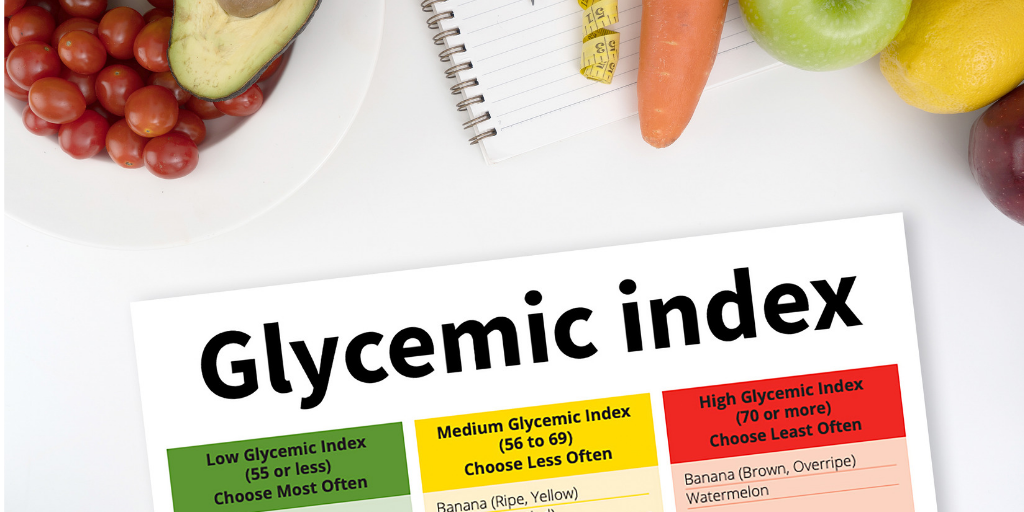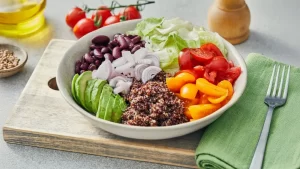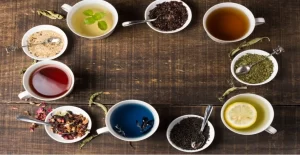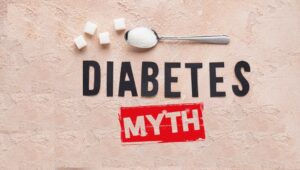Low Glycemic Index (GI) Foods for Better Blood Sugar Control

Low Glycemic Index (GI) Foods for Better Blood Sugar Control
Managing blood sugar levels is one of the primary concerns for people living with diabetes. Keeping your blood sugar within the recommended range can help prevent long-term complications such as nerve damage, kidney disease, and heart disease. One of the most effective ways to manage blood sugar is through dietary changes, especially by focusing on low glycemic index (GI) foods.
In this article, we will explore the importance of low-GI foods, provide a list of foods that are ideal for blood sugar control, and explain how these foods can help prevent blood sugar spikes, improve insulin sensitivity, and provide overall better health.
What is a Low-Glycemic-Index (GI) Food?
The glycemic index (GI) is a measure of how quickly carbohydrate-containing food raises blood glucose levels after consumption. Foods are ranked on a scale from 0 to 100 based on their effect on blood sugar. A high GI food causes a rapid spike in blood sugar, while a low GI food causes a gradual increase.
Low-GI foods (GI ≤ 55) are digested slowly and cause a slow, steady release of glucose into the bloodstream. This is particularly beneficial for people with diabetes or those looking to prevent diabetes and maintain a stable blood sugar level.
Benefits of Low-GI Foods:
- Prevent blood sugar spikes: These foods release glucose slowly, avoiding the sudden spikes that can be harmful.
- Improve insulin sensitivity: Low-GI foods can help the body use insulin more effectively.
- Help with weight management: They promote satiety and reduce the urge to snack.
- Reduce the risk of heart disease: Some low-GI foods are high in fiber and healthy fats, which can improve heart health.
Top Low-Glycemic Foods That Help Lower Blood Sugar
To effectively control blood sugar, it’s important to incorporate a variety of low-GI foods into your meals. Below is a breakdown of the best foods that help lower blood sugar.
Non-Starchy Vegetables (GI: 10–25)
Non-starchy vegetables are some of the healthiest foods you can eat, especially for blood sugar control. These vegetables are low in calories, high in fiber, and packed with vitamins and minerals. They also contain little to no starch, meaning they have a minimal effect on blood glucose levels.
Examples:
- Spinach
- Kale
- Broccoli
- Cabbage
- Bell peppers
- Cauliflower
- Zucchini
- Cucumber
Why they work: These vegetables are rich in fiber, which slows down digestion and helps maintain steady blood sugar levels. They can be freely included in your diabetic diet, helping you manage blood sugar without worrying about significant glucose spikes.
Whole Grains (Low GI Options)
Whole grains are complex carbohydrates that provide a steady source of energy. Unlike refined grains, which can cause rapid spikes in blood sugar, whole grains are digested more slowly, helping to regulate glucose levels over time.
Examples:
- Steel-cut oats (GI: 42)
- Quinoa (GI: 53)
- Barley (GI: 28)
- Bulgur (dalia) (GI: 46)
- Whole grain pasta (GI: 42)
Why they work: These grains are high in fiber and are absorbed more slowly, leading to a gradual release of glucose. They provide a more stable blood sugar level and are excellent for managing long-term blood sugar control.
Legumes and Pulses
Legumes, including beans and lentils, are rich in protein and fiber, making them an excellent choice for controlling blood sugar. They have a low glycemic index and are full of nutrients that promote overall health.
Examples:
- Chickpeas (chana) — GI: 28
- Kidney beans (rajma) — GI: 29
- Lentils (masoor/moong/dal) — GI: 32–36
- Black beans — GI: 30
Why they work: Legumes are an excellent source of plant-based protein and fiber, which help stabilize blood sugar levels and support digestion. Their low-GI nature makes them an ideal addition to your meals to keep your blood sugar levels in check.
Low GI Fruits
While fruits contain natural sugars, many have a low glycemic index and can be enjoyed in moderation by people with diabetes. These fruits are nutrient-dense, offering essential vitamins and minerals without causing blood sugar spikes.
Examples:
- Berries (blueberries, strawberries) — GI: 25
- Apple — GI: 36
- Pear — GI: 38
- Orange — GI: 42
- Guava — GI: 31
- Kiwi — GI: 50
- Papaya — GI: 60 (moderate, in small portions)
Why they work: Low-GI fruits are packed with fiber and antioxidants, making them excellent for blood sugar control. Pair them with protein or healthy fats to slow their absorption and prevent spikes in glucose.
Healthy Fats & Protein (GI: 0)
Fats and proteins don’t affect blood sugar levels because they contain no carbohydrates. Healthy fats and proteins can stabilize blood sugar, especially when combined with carbohydrates in meals.
Examples:
- Eggs
- Fish (especially fatty fish like salmon)
- Nuts and seeds (almonds, chia, flax, pumpkin)
- Tofu, paneer
- Avocados
Why they work: Healthy fats and proteins help slow digestion, improve insulin sensitivity, and keep blood sugar levels stable. They prevent post-meal glucose spikes, making them important for maintaining blood sugar control.
Low-Fat Dairy (in moderation)
Low-fat dairy products are a good source of calcium, protein, and vitamins, and they have a relatively low glycemic index. Some dairy options also contain live cultures that may benefit gut health.
Examples:
- Plain Greek yogurt (GI: ~33)
- Unsweetened almond or soy milk (GI: <30)
- Toned milk (small amounts)
Why they work: Low-fat dairy can help stabilize blood sugar levels while providing essential nutrients like calcium and protein. Opting for unsweetened versions helps to avoid hidden sugars.
High GI Foods to Limit or Avoid
While low-GI foods should be emphasized, it’s just as important to avoid high-GI foods, which cause rapid spikes in blood sugar. These foods can make it difficult to manage diabetes effectively and can lead to long-term complications.
High GI Foods to Limit or Avoid:
- White bread (GI: ~75)
- White rice (GI: ~72–89)
- Potatoes (boiled) (GI: ~78)
- Sugary cereals (GI: 70–90)
- Watermelon (GI: ~72)
- Soda/fruit juice (GI: 85–95+)
Why to avoid: These foods cause rapid increases in blood sugar, making it harder to maintain stable glucose levels. They also offer little nutritional value and can contribute to weight gain and insulin resistance.
Which Food Has Zero Glycemic Index?
Some foods have a zero glycemic index because they contain no carbohydrates, which means they don’t affect blood sugar levels. These foods are ideal for people managing diabetes, insulin resistance, or prediabetes.
Foods with Zero Glycemic Index (GI = 0)
Proteins:
- Eggs (boiled, scrambled, poached)
- Meat (chicken, beef, lamb – grilled or roasted)
- Fish & seafood (salmon, tuna, sardines, prawns)
- Tofu and tempeh (unsweetened)
Fats:
- Olive oil
- Coconut oil
- Avocados
- Ghee (clarified butter)
- Butter (in moderation)
- Nuts and seeds (unsweetened)
Spices & Condiments (Unsweetened):
- Salt
- Black pepper
- Cinnamon (also improves insulin sensitivity)
- Ginger, garlic, turmeric
- Vinegar (especially apple cider vinegar) may even help lower blood sugar.
- Mustard
- Herbs (basil, coriander, thyme, etc.)
Zero-Carb Beverages:
- Water
- Herbal teas
- Green tea
- Black coffee (no sugar or milk)
- Sparkling water or soda water (unsweetened)
Why they work: These foods contain no carbs and therefore don’t raise blood sugar. They help regulate glucose without compromising nutrition, and they improve insulin sensitivity.
Summary of Low-Glycemic Foods and Their Benefits
Low-GI foods are an essential part of managing blood sugar levels effectively. By incorporating these foods into your diet, you can help stabilize blood sugar levels and improve overall health. A well-balanced diet of low-GI foods not only helps reduce blood sugar spikes but also improves insulin sensitivity and supports long-term health.
| Food Type | Examples |
|---|---|
| Proteins | Eggs, fish, chicken, tofu |
| Fats | Olive oil, ghee, avocado |
| Spices | Salt, herbs, turmeric, vinegar |
| Drinks | Water, black coffee, herbal tea |
Incorporating low-GI foods into your diet is a simple yet effective way to control your blood sugar levels and promote better health. Start today and make the choice for healthier eating that will benefit your long-term health.
Written by:
Dr. Laura Chen, MD, Endocrinologist
Dr. Laura Chen is a board-certified endocrinologist with over 15 years of experience specializing in diabetes management. ShMichael Tane has worked extensively in helping individuals stabilize blood sugar levels through proper nutrition, exercise, and medication.
Reviewed by:
Michael Tan, RD, Registered Dietitian
Michael Tan is a registered dietitian with over a decade of experience helping patients with diabetes manage their condition through evidence-based meal planning. He emphasizes the importance of the glycemic index in controlling blood sugar levels.
References
- Diabetes Daily Tips. Prediabetes: What It Means and How to Prevent Type 2 Diabetes. https://diabetesdailytips.com/prediabetes-what-it-means-and-how-to-prevent-type-2-diabetes/
- International Diabetes Federation. (2024, June). Annual Report 2023. https://idf.org/media/uploads/2023/05/attachments-51.pdf
- Glycemic-Index.net. (n.d.). Low Glycemic Index (GI) Foods List. https://glycemic-index.net/low-glycemic-index-foods/








2 thoughts on “Low Glycemic Index (GI) Foods for Better Blood Sugar Control”